Demographic and Clinical Profile Analysis of Covid-19 Suspected Patients: A Tertiary Care Hospital Study in Bangladesh
Dr. Monir Hossain1, Prof. Dr. Ali Hossain2, Dr. Abdus Shakur Khan3, Dr. Kazi Saifuddin Bennoor4, Dr. Laizu Ara Soheli5
1Assistant Professor, Department of Medicine, Shahabuddin Medical College Hospital, Dhaka, Bangladesh
2Ex Director, National Institute Diseases of the Chest and Hospital, Dhaka, Bangladesh
3Assistant Professor, Department of Respiratory Medicine, National Institute Diseases of the Chest and Hospital, Dhaka, Bangladesh
4Assistant Professor, Department of Respiratory Medicine, National Institute Diseases of the Chest and Hospital, Dhaka, Bangladesh
5Medical Officer, Department of Obs & Gyne, Lake View Hospital, Dhaka, Bangladesh
*Corresponding Author: Dr. Monir Hossain, Assistant Professor, Department of Medicine, Sahabuddin Medical College Hospital, Dhaka, Bangladesh
Received: 15 October 2022; Accepted: 14 January 2023; Published: 21 January 2023
Article Information
Citation:
Monir Hossain, Ali Hossain, Abdus Shakur Khan, Kazi Saifuddin Bennoor, Laizu Ara Soheli. Demographic and Clinical Profile Analysis of Covid-19 Suspected Patients: A Tertiary Care Hospital Study in Bangladesh. Archives of Internal Medicine Research 6 (2023): 10-14.
View / Download Pdf Share at FacebookAbstract
Background: In Bangladesh, the first Covid-19 patient was detected on the 8th March 2020. The demographic profile of Covid-19 patients may be helpful in the treatment arena of Covid-19. We have very limited researchoriented data regarding the social, demographic and/or clinical status of Covid-19 patients.
Objective: The objective of the study was to analysis the demographic profile of Covid-19 suspected patients.
Methods: This observational study was conducted in the Department of Medicine Shahabuddin Medical College Hospital, Dhaka, Bangladesh during the period from November 2020 to March 2022. In total 126 Covid-19 suspected patients referred from government primary/secondary healthcare institutions were included as the study subjects. This study was approved by the ethical committee of the mentioned hospital. All data were collected, processed and analyzed by using MS Office and SPSS version 23 programs as per need.
Results: In this study, the male-female ratio of the participants was 1:1.7. Majority number of patients ware from 31 to 60 years’ range: 17.5%, 31.7% and another 17.5% from 31-40, 41-50 and 51-60-years’ age groups respectively. Through serum biochemistry, complete blood count (CBC), liver and kidney function test, electrolytes assessment and chest radiographs investigations, 41% cases were found as Covid-19 positive and the rest 59% cases were found as ‘not positive’. But as Gold Standard Test, through RT-PCR tests, only 13% (n=16) participants were found as Covid-19 positive whereas 87% (n=110) was Covid-19 not positive finally. Comorbidities were found among 61.1% participants with alarming ratio of HTN and DM. As the major comorbidities, HTN and DM were found in 44% and 38% respectively.
Keywords
Demographic, Clinical profile, Covid-19 suspected patients, Bangladesh
Article Details
Introduction
In Bangladesh even in the world, we have very limited research-oriented as well as time tasted information regarding the social, demographic and/or clinical status of Covid-19 patients. But, the demographic profile of Covid-19 patients may be helpful in the treatment arena of Covid-19. The novel corona virus first detected on the 31 December 2019 in Wuhan, China. [1] On the other hand, In Bangladesh, the first case of Covid-19 was identified on the 8th March, 2020. Covid-19 is generally transmitted through the respiratory droplets as well as close contact. [2] Although the seriousness of Covid-19 is decreasing day by day but till now, the presence of patients with Covid-19 is the main source of infection globally. [3] In severe cases of Covid-19, organ dysfunction, shock, acute cardiac injury, acute respiratory distress syndrome, acute kidney injury and even death can be occurred. [4] In Covid-19, severe acute respiratory illness along with fever and respiratory symptoms, like cough as well as shortness of breath, comprise the main clinical presentations. [5] In such cases it becomes very difficult to identify the disease between pneumonia and Covid-19. On the other hand, for several reasons unusual manifestations, such as patients without respiratory symptoms or only very mild symptoms are rising worldwide day by day. [6] So, understanding about regional features are going to be important. Within the previous months, a good number of studies elaborating local epidemiological and clinical features have been published. [4] In Bangladesh Covid-19 pandemic has reached to all the 64 administrative districts by the 1st July, 2020, causing over 145,000 cases and 1,874 deaths. [7]
Methodology
This observational study was conducted in the Department of Medicine, Shahabuddin Medical College Hospital, Dhaka, Bangladesh during the period from November 2020 to Mach 2022. In total 126 Covid-19 suspected patients referred from government primary/secondary healthcare institutions were included as the study subjects. This study was approved by the ethical committee of the mentioned hospital. As per the inclusion criteria of this current study, only several aged referred Covid-19 suspected patients from nearest government primary and secondary healthcare institutions were included. For those referred subjects flu emergency had been created for initial management. On the other hand, as per the exclusion criteria of this study, previously confirmed Covid-19 patients were excluded from this assessment. The final detection for novel COVID-19 virus was performed in accordance with WHO (World Health Organization) guidelines. [8] The patients were subjected to investigations including serum biochemistry, complete blood count (CBC), liver and kidney function test, electrolytes assessment, and chest radiograph as per need. As per necessity, arterial blood gases, the coagulation profile, markers of inflammation including procalcitonin, C-reactive protein, and serum ferritin were evaluated. The case records of all the patients were reviewed and all the biochemical, clinical, radiological and management details were recorded. Besides these, details of each patient regarding clinical presentation demographic profile, severity, comorbidities, treatment methods, course during hospital stay and outcome were recorded. All data were collected, processed and analyzed by using MS Office and SPSS version 23 programs as per need.
Results
In this study, among total 126 participants, 46% were male whereas the rest 54% were female. So female participants were dominating in number and the male-female ratio was 1:1.17. The highest numbers of the participants were from 41-50 year’s age group which was 32%. Besides this, 12.7%, 17.5%, another 17.5%, 13.5% and 7.1% were form ≤ 30, 31-40, 41-50, 51-60, 61-70 and ≥ 70 years’ age groups respectively. In this study, through serum biochemistry, complete blood count (CBC), liver and kidney function test, electrolytes assessment and chest radiographs investigations 41% cases were found as Covid- 19 positive and the rest 59% cases were found as ‘not positive’. But finally in RT-PCR tests, among all the participants, only 13% cases were found as Covid-19 positive and the rest 87% were found as Covid-19 negative. In this study, in analyzing the comorbidities of the participants, we observed that, majority of the participants (61.1%) were with one or more comorbidities whereas the rest 38.9% were free from any type of comorbidity. Considering the incidence numbers, as major comorbidities, HTN (Hypertension) and diabetes melitus (DM) were found among 44% and 38% participants respectively. Besides these, IHD was found in 10% patients and in few cases CKD, PCOS, EI, pancreatectomy and dengue were found as comorbidities.
|
Age (Year) |
n |
(%) |
|
≤ 30 yrs. |
16 |
12.7 |
|
31-40 yrs. |
22 |
17.5 |
|
41-50 yrs. |
40 |
31.7 |
|
51-60 yrs. |
22 |
17.5 |
|
61-70 yrs. |
17 |
13.5 |
|
≥ 70 yrs. |
9 |
7.1 |
Table 1: Distribution of study participants based on age group (N=126).
|
RT-PCR Report |
n |
(%) |
|
Covid-19 positive |
16 |
13% |
|
Covid-19 negative |
110 |
87% |
Table 2: RT-PCR reports of Participants (N=126).
|
Characteristics |
n |
% |
|
Presence of comorbidities |
||
|
Yes |
77 |
61.10% |
|
No |
49 |
38.90% |
|
Comorbidities distribution |
||
|
HTN |
55 |
44% |
|
DM |
48 |
38% |
|
IHD |
13 |
10% |
|
CKD |
4 |
3% |
|
PCOS |
1 |
1% |
|
EI |
1 |
1% |
|
Pancreatectomy |
1 |
1% |
|
Dengue |
1 |
1% |
|
Others |
14 |
11% |
Table 3: Comorbidities distribution among participants (N=126).
|
Shortness of breath (SOB) |
n |
(%) |
|
Mild |
2 |
1.70% |
|
Moderate |
31 |
24.20% |
|
Severe |
26 |
20.70% |
|
Normal |
67 |
53.40% |
Table 4: Distribution of study participants based on Shortness of breath (N=126).
|
Saturation |
Mean ± SD |
P value |
|
O2 Saturation with 2LO2 |
96.64±2.44 |
0.001s |
|
O2 Saturation with_3LO2 |
96.42±1.51 |
0.001s |
|
O2 Saturation with_4LO2 |
96.58±2.75 |
0.001s |
|
O2 Saturation with_5LO2 |
96.59±1.87 |
0.001s |
|
O2 Saturation with_6LO2 |
90.50±0.71 |
0.035s |
|
O2 Saturation with_7LO2 |
96.70±1.70 |
0.001s |
|
O2 Saturation without |
96.25±3.79 |
0.001s |
|
O2 Saturation RA |
98.33±1.15 |
0.001s |
|
*Unpaired t-test |
Table 5: Comparison of mean saturation (N=126).
|
Clinical Progress |
n |
(%) |
|
Improving |
110 |
87.80% |
|
Stable |
13 |
10.00% |
|
Slow |
3 |
2.20% |
Table 6: Distribution of study participants based on clinical progress (N=126).
|
Outcome |
n |
(%) |
|
Good |
120 |
94.90% |
|
Not good |
6 |
5.10% |
Table 7: Distribution of study participants based on Outcome (N=126).
Discussion
The study aimed to fulfill a demographic profile of Covid-19 suspected patients. In this current study, female participants were dominating in number and the male-female ratio was 1:1.17. In another international study [9] the number of male participants was some higher than that of female. In another retrospective study by Xiao et al. of 301 Covid-19 patients hospitalized at Tongji Hospital in Wuhan, China, the median age was 58 years and 51.2% were male. [10] In another study, male participants had a significantly higher positivity rate than female patients (40.43% versus 36.71%, respectively; p < 0.01). [11] Majority number of our patients were from 31 to 60 years’ range: 17.5%, 31.7% and another 17.5% from 31-40, 41-50- and 51-60-years’ age groups respectively. Despite its relatively low sensitivity, the real-time reverse-transcription polymerase chain reaction (RT-PCR) had been described as the gold standard globally to confirm Covid-19 diagnosis during the study period. [12] In our study, through RT-PCR tests, only 41% participants were found as Covid-19 positive. But through serum biochemistry, complete blood count (CBC), liver and kidney function test, electrolytes assessment and chest radiographs investigations, 41% cases were found as Covid-19 positive whereas the rest 59% cases were found as ‘not positive’. Escalera-Antezana et al. assessed 152 subjects in a cross-sectional retrospective analysis and found 7.9% positive cases by real-time reverse-transcriptase polymerase chain reaction (RT-PCR). [13] Considering the incidence numbers, in this study, as major comorbidities, HTN (Hypertension) and diabetes mellitus (DM) were found among 44% and 38% participants respectively. Besides these, IHD was found in 10% patients and in few cases CKD, PCOS, EI, pancreatectomy and dengue were found as comorbidities. In a study, the most common comorbidities found were hypertension, obesity, diabetes mellitus. [14] However, it was observed that comorbidities increase the chances of infection. In shortness of breath (SOB), it had been observing that 26(20.7%) were in sever, 31(24.2%) were in moderate, 2(1.7%) were in mild and rest 67(53.4%) were in normal condition. Regarding clinical progress, a major participant 110(87.8%) were in improving, 13(10%) were stable and 3(2.2%) were in slow progress. Finally, outcome of total 126 study population 120(94.9%) were in good condition and 6(5.1%) were in not good condition.
Limitation of the Study
Though it was a single centered study with a small sample size, so the findings of this study may not reflect the exact scenario of the whole country.
Conclusion and Recommendation
In Bangladesh, middle aged people are in high risk for attacking by Covid-19. Hypertension and DM may be considered as the most potential comorbidities among Covid-19 suspected patients. Only proper vaccination can save people from this serious pandemic. For getting more specific findings we would like to recommend for conducting similar more studies with larger sized samples in several places.
Funding
No funding sources.
Conflicts of Interest
None declared.
Ethical approval
The study was approved by the Institutional Ethics Committee.
References
- Ruan S. Likelihood of survival of coronavirus disease 2019. The Lancet Infectious Diseases. 2020; 20(6): 630-631. DOI: 10.1016/s1473-3099(20)30257-7.
- Yang F, Liu N, Hu JY, et al. Zhonghua Jie He He Hu Xi Za Zhi. 2020; 43(3): 180-182. DOI: 10.3760/cma.j.issn.1001-0939.2020.03.007.
- Chen ZM, Fu JF, Shu Q, et al. Diagnosis and treatment recommendations for pediatric respiratory infectioncaused by the 2019 novel coronavirus. World J Pediatr. 2020; 16(3): 240-246. DOI: 10.1007/s12519-020-00345-5.
- Huang C, Wang Y, Li X, et al. Clinical features of patients infected with 2019 novel coronavirus in Wuhan, China [published January 24, 2020]. Lancet. doi:10.1016/S0140-6736(20)30183-5.
- Guan WJ, Ni ZY, Hu Y, Liang WH, Ou CQ, He JX, et al. Clinical Characteristics of Coronavirus Disease 2019 in China. N Engl J Med. 2020; 382(18):1708 1720.
- Pauline V, Diem LV, Arnaud G, Manuel S, Laurent K, Frederique J. Clinical features of covid-19, The wide array of symptoms has implications for the testing strategy. BMJ 2020; 369. m1470. 10.1136/bmj.m1470.
- 2020. Covid-19 Status Bangladesh [Internet]. [accessed 2020 Apr 16]. Avalable athttps: //www. iedcr.gov.bd/.
- Clinical management of severe acute respiratory infection when COVID-19 is suspected. Available at: https://www.who.int/publications–detail/clinical–management–of–severe–acuterespiratory–infection–when– novel–coronavirus–(ncov)–infection–issuspected. Accessed on 31 Oct 2020.
- Jmaa MB, Ayed HB, Kassis M, Hmida MB, Trigui M, Maamri H, Damak J (2022). Epidemiological profile and performance of triage decision-making process of COVID-19 suspected cases in southern Tunisia. African Journal of Emergency Medicine 2022, 12: 1-6.
- Xiao AT, Tong YX, Gao C, Zhu L, Zhang YJ, Zhang S. Dynamic profile of RT-PCR findings from 301 COVID-19 patients in Wuhan, China: A descriptive study. J Clin Virol 2020, 127: 104346.
- Liu R, Han H, Liu F, et al. Positive rate of RT-PCR detection of SARS-CoV-2 infection in 4880 cases from one hospital in Wuhan, China, from Jan to Feb 2020. Clin Chim Acta. 2020, 505: 172-175.
- Afzal. Molecular diagnostic technologies for COVID-19: limitations and challenges J Adv Res (2020), 10.1016/j.jare.2020.08.002.
- Escalera-Antezana JP, Lizon-Ferrufino NF, Maldonado-Alanoca A, et al. Clinical features of the first cases and a cluster of coronavirus disease 2019 (COVID-19) in Bolivia imported from Italy and Spain. Travel Med Infect Dis 2020, 35: 101653.
- Coronavirus (COVID-19): symptoms of coronavirus. Centers for Disease Control and Prevention. 2020. [Accessed April 18, 2020, https://www.cdc.gov/coronavirus/2019-ncov/symptoms-testing/symptoms.html].

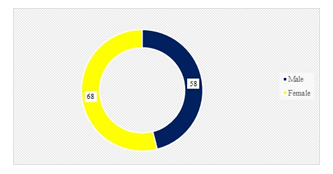
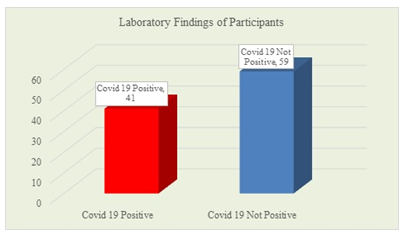
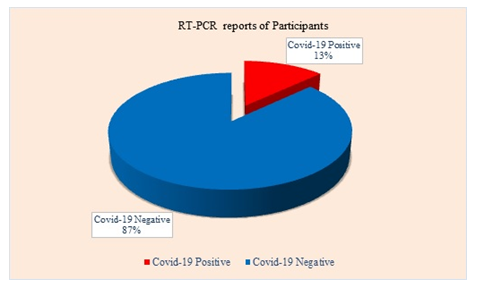
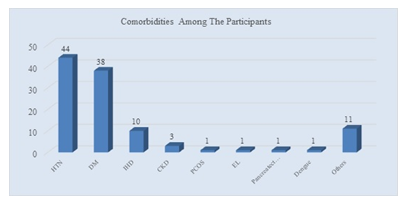
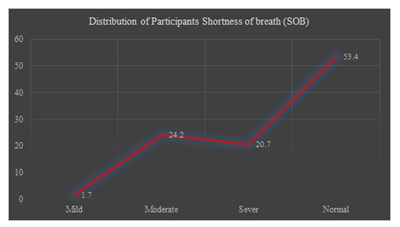
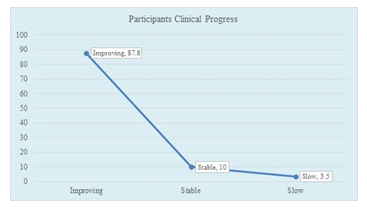

 Impact Factor: * 3.6
Impact Factor: * 3.6 Acceptance Rate: 78.21%
Acceptance Rate: 78.21%  Time to first decision: 10.4 days
Time to first decision: 10.4 days  Time from article received to acceptance: 2-3 weeks
Time from article received to acceptance: 2-3 weeks 